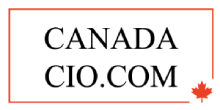In the ever-evolving realm of technology, Chief Information Officers (CIOs) find themselves at the forefront of a critical challenge: combating the relentless rise in IT costs. As organizations increasingly rely on technology to drive their operations and innovation, CIOs must navigate a landscape where the cost of maintaining and advancing IT infrastructure can become a formidable barrier to success. The question now resounds: Are CIOs equipped to tackle the escalating costs and ensure optimal value for their organizations?
The escalating IT costs are not merely an isolated concern but a pervasive challenge faced by businesses across industries. Factors such as the rapid pace of technological advancements, the increasing complexity of IT ecosystems, and the growing cybersecurity threats contribute to the mounting financial burden on CIOs. In this scenario, the ability of CIOs to effectively manage and control IT costs is not just a matter of financial prudence; it is a strategic imperative for the sustained growth and competitiveness of organizations.
One key strategy that forward-thinking CIOs are adopting is a shift towards cloud technologies. The cloud offers a scalable and flexible alternative to traditional on-premises infrastructure, allowing organizations to pay only for the resources they use. This not only reduces upfront capital expenditures but also enables CIOs to adapt quickly to changing business requirements. By leveraging cloud services, CIOs can achieve cost optimization while maintaining the agility needed in today’s dynamic business environment.
Moreover, CIOs are embracing the power of data analytics to make informed decisions about IT spending. By leveraging advanced analytics tools, CIOs can gain insights into the usage patterns of IT resources, identify areas of inefficiency, and optimize allocation based on real-time data. This proactive approach not only helps in curbing unnecessary expenses but also ensures that IT investments are aligned with organizational priorities.
Another pivotal strategy involves the judicious use of automation technologies. By automating routine and repetitive tasks, CIOs can enhance operational efficiency, reduce labor costs, and minimize the risk of human errors. Automation not only streamlines IT processes but also allows IT teams to focus on high-value tasks that contribute directly to business objectives. This strategic reallocation of resources can lead to significant cost savings in the long run.
CIOs are also exploring innovative approaches to vendor management to mitigate IT costs. Building strong partnerships with technology vendors and negotiating favorable terms can be instrumental in controlling expenses. CIOs are adopting a more strategic and collaborative approach in vendor relationships, ensuring that they receive optimal value from their technology investments.
Cybersecurity, while a critical investment, is an area where CIOs need to balance protection with cost considerations. A targeted and risk-based approach to cybersecurity spending, coupled with the implementation of cost-effective security measures, is crucial. CIOs are focusing on identifying and investing in security measures that provide the greatest impact, ensuring a robust defense against cyber threats without unnecessary financial strain.
Furthermore, CIOs are actively engaging in cost transparency initiatives, ensuring that the entire organization understands the value derived from IT investments. This not only fosters a culture of accountability but also enables better decision-making at all levels of the organization. Clear communication about the costs and benefits of IT initiatives helps align the IT strategy with broader business goals, garnering support for necessary investments.
In conclusion, the rising tide of IT costs is a challenge that CIOs cannot afford to ignore. However, it is also an opportunity for CIOs to showcase their strategic leadership by implementing innovative approaches to cost management. From leveraging cloud technologies and data analytics to embracing automation and fostering strategic vendor partnerships, CIOs have an array of tools at their disposal. The key lies in proactive and strategic decision-making to ensure that IT investments align with organizational goals while keeping costs in check. The question remains: Are you, as a CIO, prepared to lead the charge against rising IT costs?

